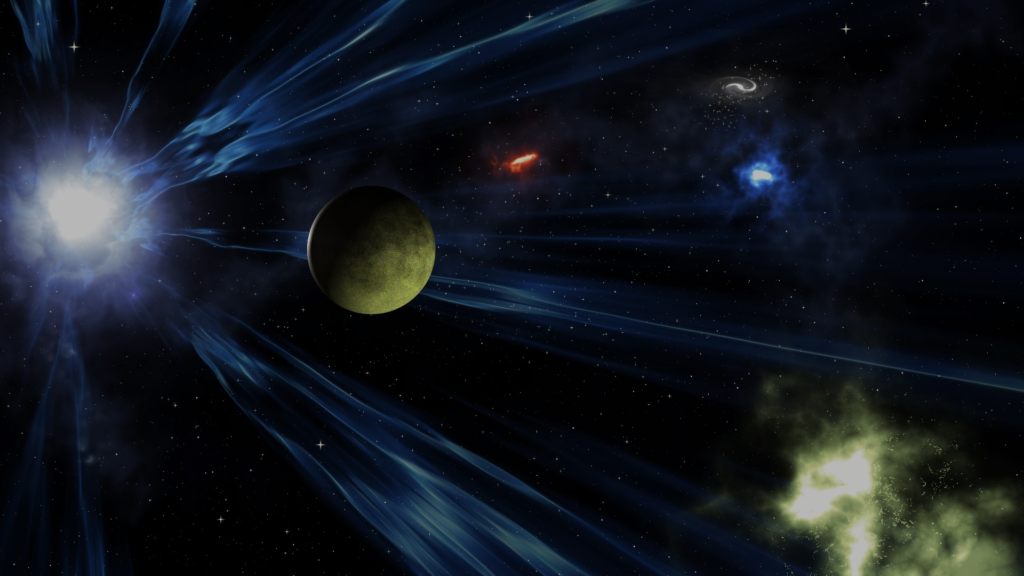## Unveiling the Mysteries of Black Holes: Cosmic Vacuum Cleaners
Have you ever wondered what happens when gravity gets completely out of control? Imagine a region of space so dense that not even light can escape its pull. That, my friends, is a black hole – one of the most fascinating and mysterious objects in the universe. Forget your vacuum cleaner; black holes are the ultimate cosmic vacuum cleaners, gobbling up everything in their path! But how do these enigmatic behemoths form, and what secrets do they hold? Let’s dive in!
### 1. The Stellar Death that Births a Black Hole
Most black holes originate from the death of massive stars. Stars, like our Sun, are essentially giant fusion reactors, converting hydrogen into helium and releasing enormous amounts of energy. This energy fights against the inward pull of gravity. But when a star many times larger than our Sun runs out of fuel, gravity wins. The star’s core collapses catastrophically, creating an incredibly dense object. If the core’s mass is sufficiently large (more than about three times the mass of our Sun), the collapse continues unabated, creating a black hole. Imagine squeezing the entire mass of a star larger than our Sun into a space the size of a city! That’s the kind of density we’re talking about.
### 2. The Event Horizon: The Point of No Return
Surrounding a black hole is a boundary called the event horizon. This is the “point of no return.” Anything that crosses the event horizon, including light, is inexorably pulled towards the singularity – the infinitely dense point at the black hole’s center. Think of it like a waterfall: once you’re past the point where the water starts flowing over the edge, there’s no turning back. The event horizon’s size depends on the black hole’s mass; more massive black holes have larger event horizons.
### 3. Supermassive Black Holes: Giants at the Galactic Center
While stellar-mass black holes form from the death of individual stars, supermassive black holes are truly colossal. These behemoths, millions or even billions of times the mass of our Sun, reside at the centers of most galaxies, including our own Milky Way. How they form is still a mystery, but leading theories suggest they might grow from smaller black holes merging together over billions of years, or perhaps form directly from the collapse of enormous gas clouds in the early universe.
### 4. Observing the Unobservable: Indirect Evidence
Since light can’t escape a black hole, we can’t directly “see” them. However, we can observe their effects on the surrounding space and matter. One way is by detecting the powerful gravitational pull they exert on nearby stars and gas, causing them to orbit at incredibly high speeds. Another is by observing X-rays emitted as matter is heated to extreme temperatures as it spirals into the black hole. This swirling, superheated matter forms an accretion disk, a spectacularly bright ring of material orbiting the black hole.
### 5. Black Holes: Cosmic Recyclers?
While black holes have a fearsome reputation, they might play an important role in the evolution of galaxies. They can regulate star formation by controlling the flow of gas and dust within their host galaxies. Furthermore, the energy released from accretion disks can influence the surrounding interstellar medium. So, while they might appear destructive, black holes are intricate parts of the cosmic ecosystem.
**In Conclusion:**
Black holes are truly remarkable objects, showcasing the extreme power of gravity. Their formation, properties, and impact on the universe continue to fascinate scientists and inspire countless research projects. From the death of stars to the centers of galaxies, black holes offer a glimpse into the most extreme environments in the cosmos. What do you think the future holds for black hole research? Share your thoughts in the comments below! And for further exploration, I recommend checking out NASA’s website or searching for documentaries on black holes – it’s a journey into the truly bizarre and beautiful!


